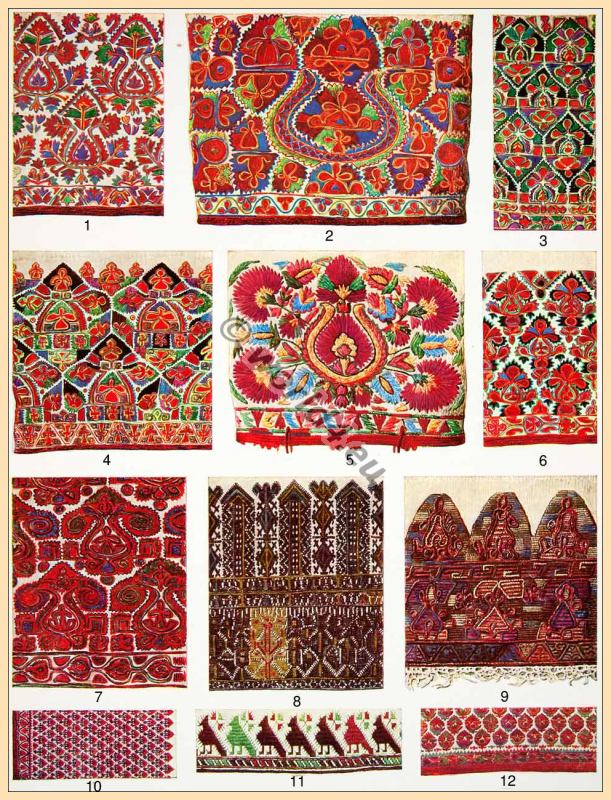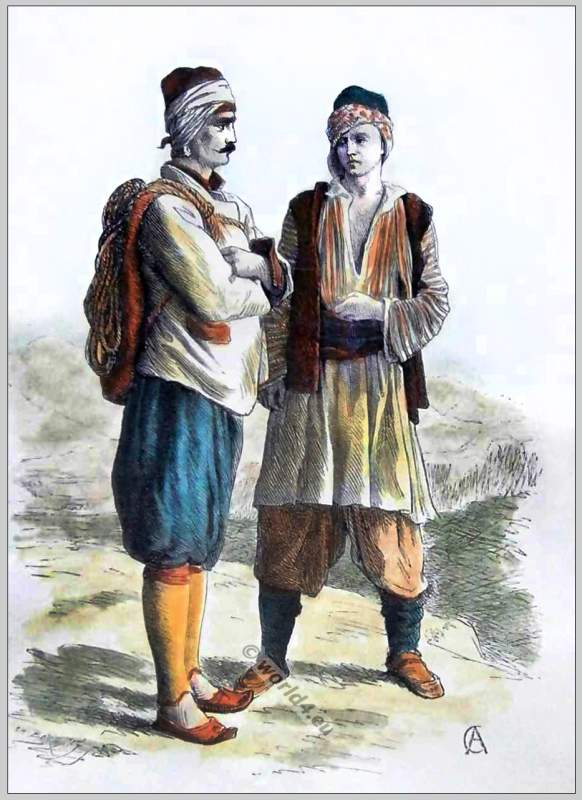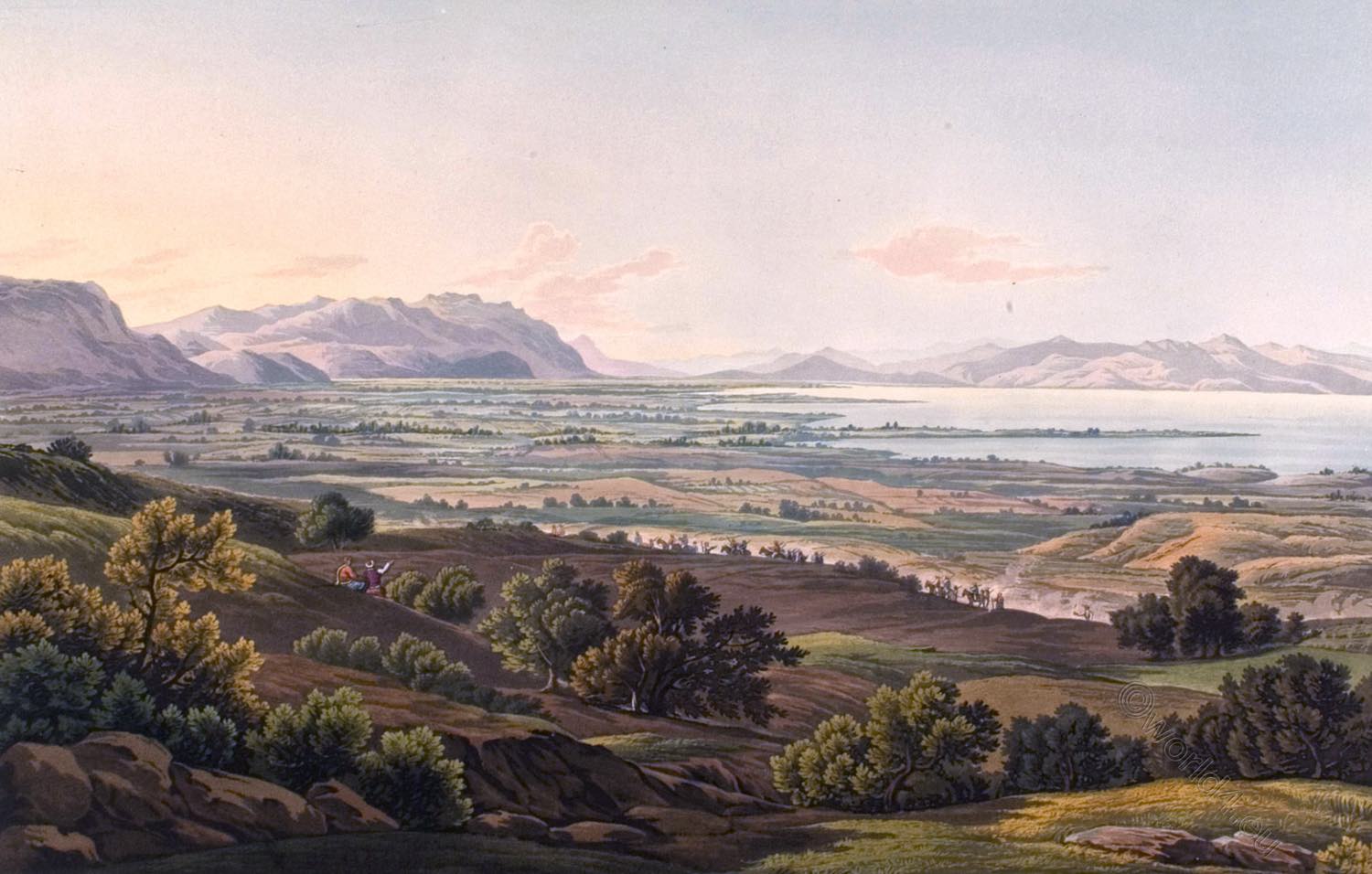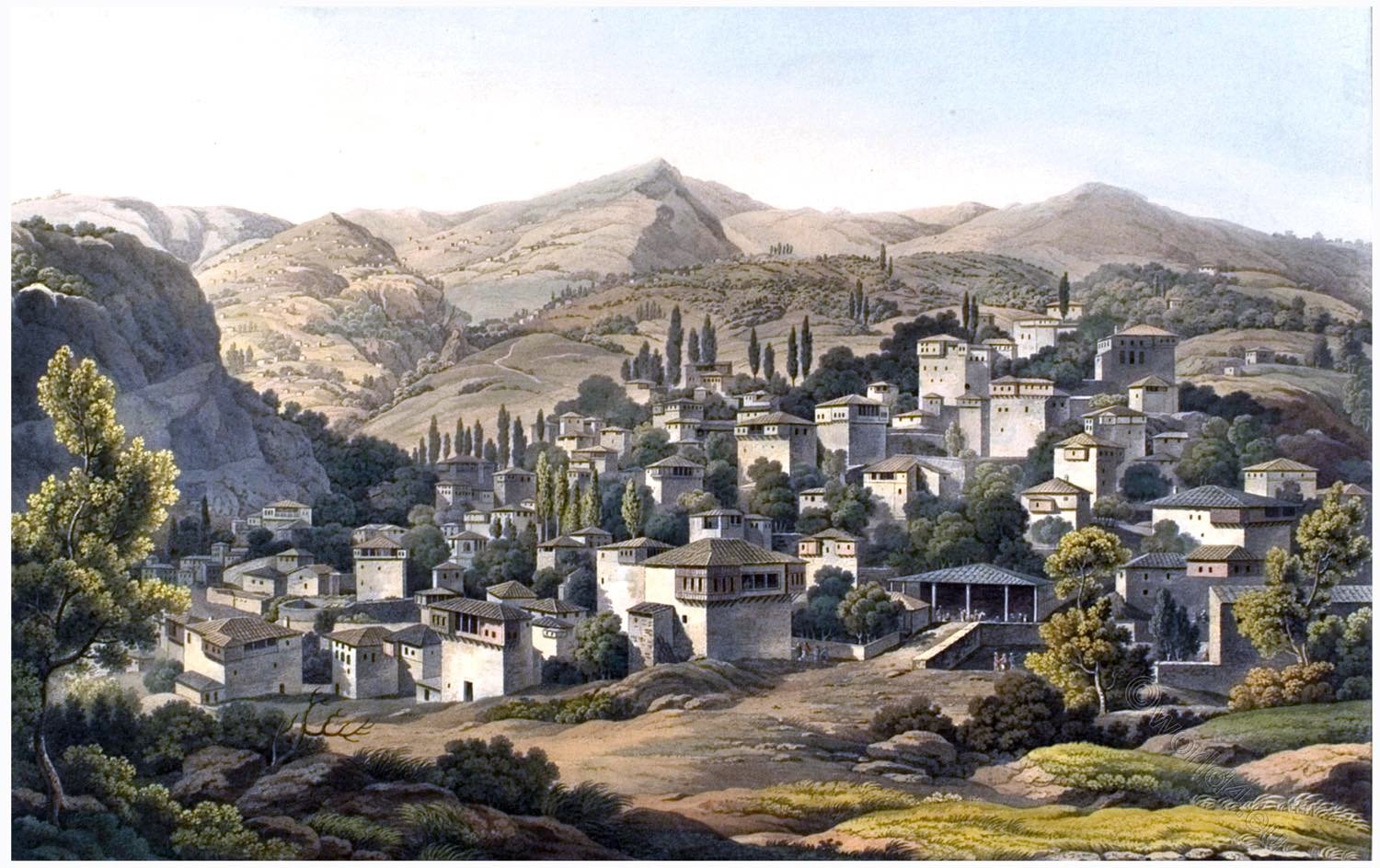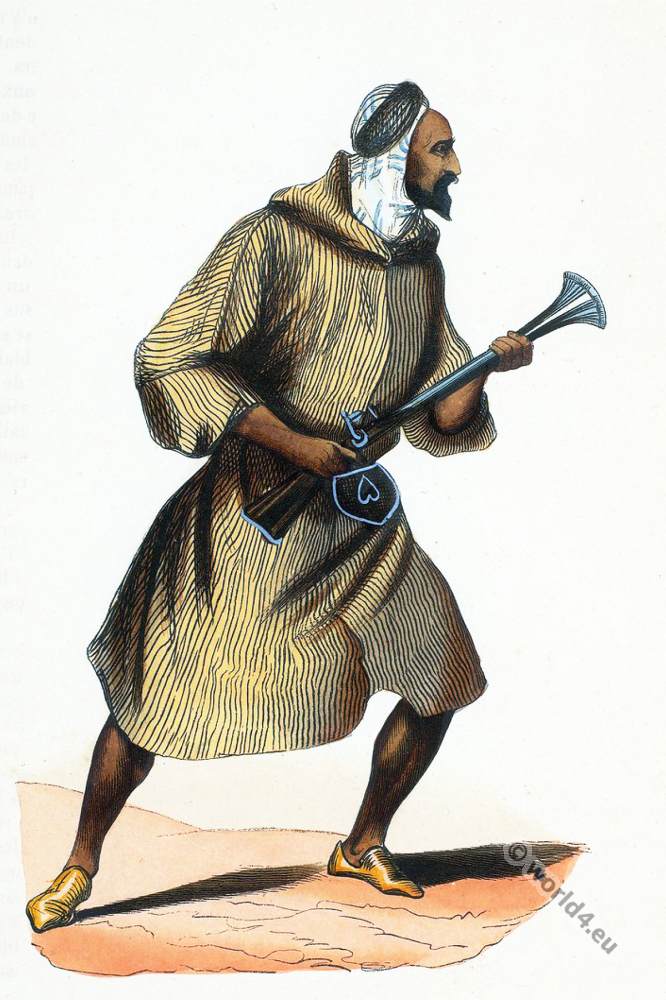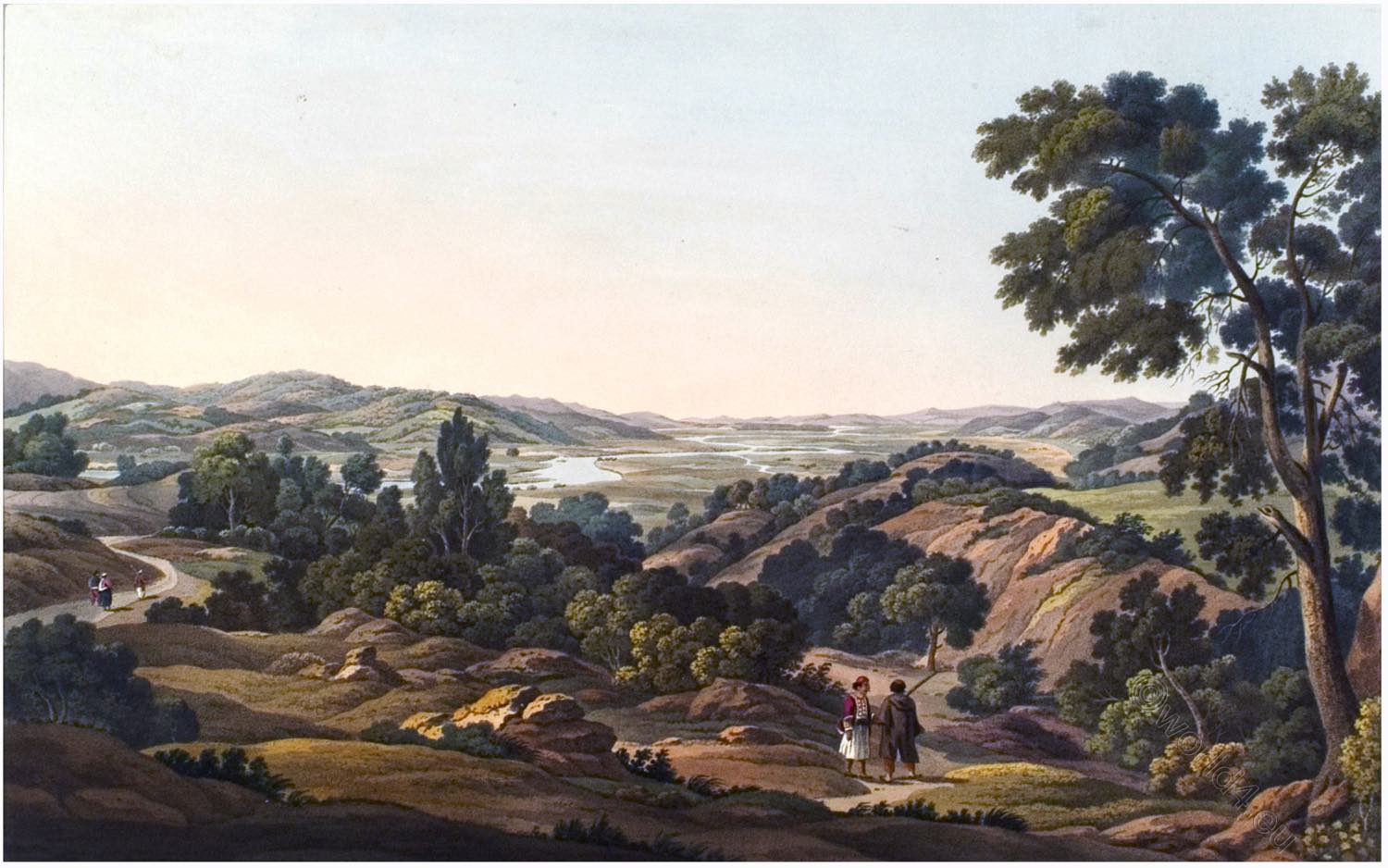
Olympia (ancient Greek Ὀλυμπία) was the sanctuary of Zeus in Elis in the northwest of the Peloponnese peninsula. It was the venue of the Olympic Games of antiquity.
PLAIN OF OLYMPIA
by Edward Dodwell.
THE celebrated plain of Olympia, which was anciently decorated with a great variety of splendid and curious edifices, and where architecture and sculpture exhibited some of their most magnificent trophies, is, at present, a long and even corn field, containing only a few and imperfect vestiges of its former sumptuous ornaments.
The Temple of Jupiter Olympus, which contained the colossal chryselephantine statue of the god, the wonder of Greece, is now fallen to the ground. The lower part of the cells, and some large fluted fragments of Doric columns, are the only relics of this imposing edifice, winch once excited such transports of admiration.
It was built of a stone called Poros, which was found near the spot, and of which Theophrastus 1) and Pliny 2) compare the hardness and the colour to that of Parian marble. It is composed of shells and concretions, and seems not to merit the encomiums winch those authors have
bestowed.
The situation of the temple is scarcely visible in this view; it may, however, be distinguished at the western extremity of the plain on the right side of the river, and over the right hand figure. The neighbouring elevation is probably the hill of Saturn.
The Alpheios is seen flowing in a broad and sinuous current on its way toward the sea. It rises in Arcadia, and many tributary streams are poured into its channel before it reaches the Olympian plain. It enters the sea at the promontory of Ichthys.
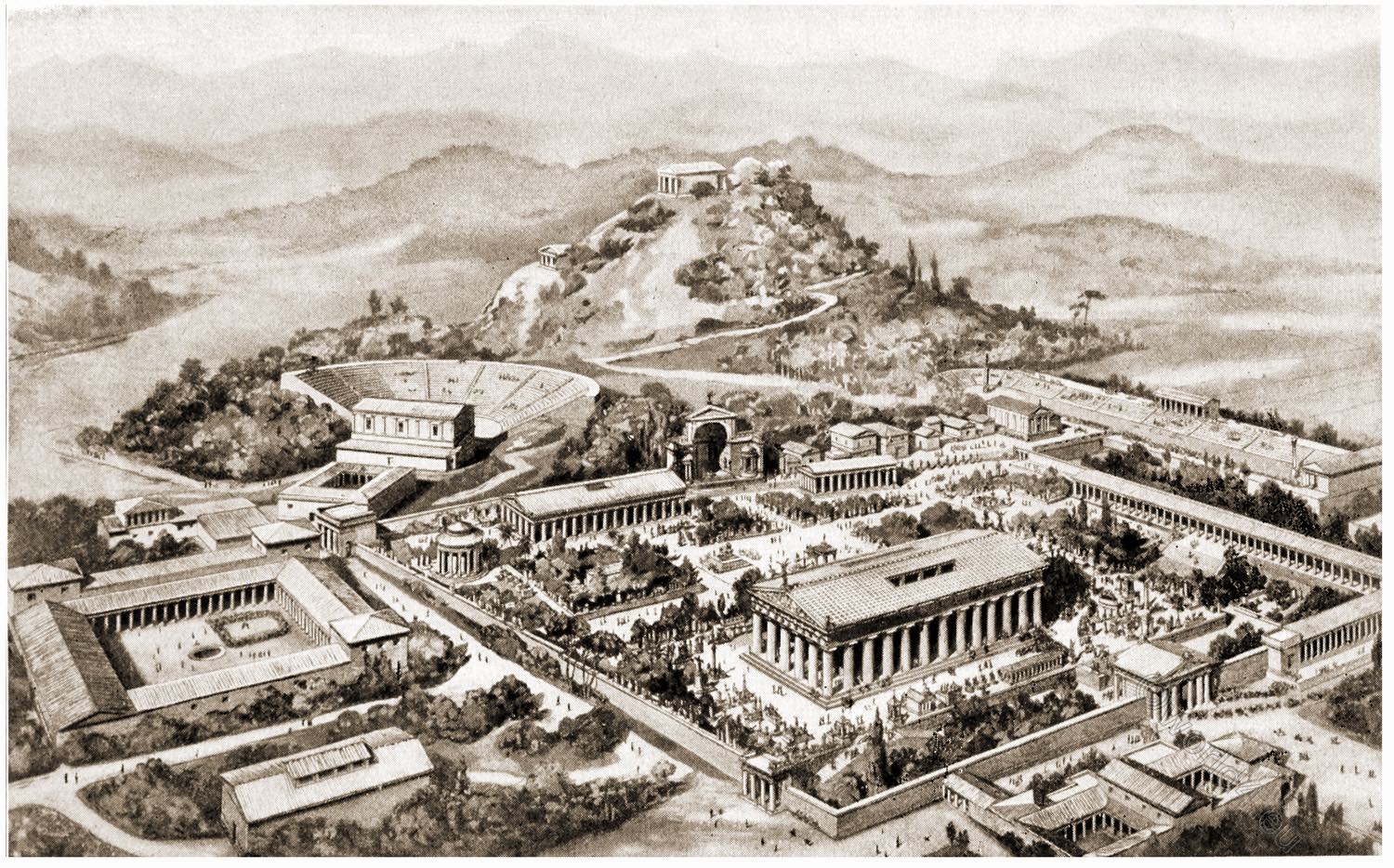
The river sometimes overflows the plain. The earth is accordingly raised considerably above its original level, and probably conceals many rich remains of ancient sculpture and magnificence. We know from the testimony of Suetonius, that Nero threw many of the finest statues into the common sewers which ran into the Alpheios.
An excavation would probably here bring to light some of the finest sculpture of antiquity. It is to be hoped that some wealthy traveller may lie possessed of sufficient taste, and animated by sufficient enterprise, to attempt an undertaking which was once the favourite scheme of the learned Winkelmann.
1) De lapid. 2) Nat. Hist. b. 36. c. 17.
Source:
- Views in Greece. Drawings by Edward Dodwell. Rod Well and Martin, London, 1821.
- The eastern nations and Greece by Philip Van Ness Myers (1846-1937). Boston Ginn & Co. 1904.
Discover more from World4 Costume Culture History
Subscribe to get the latest posts sent to your email.

